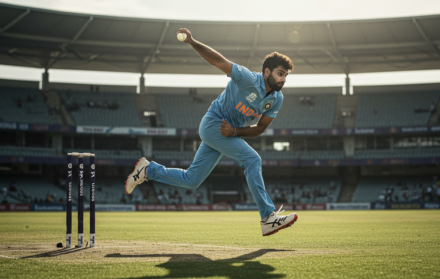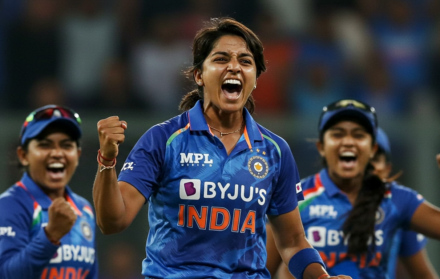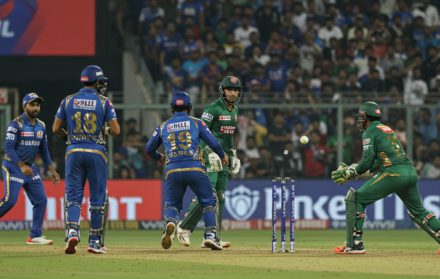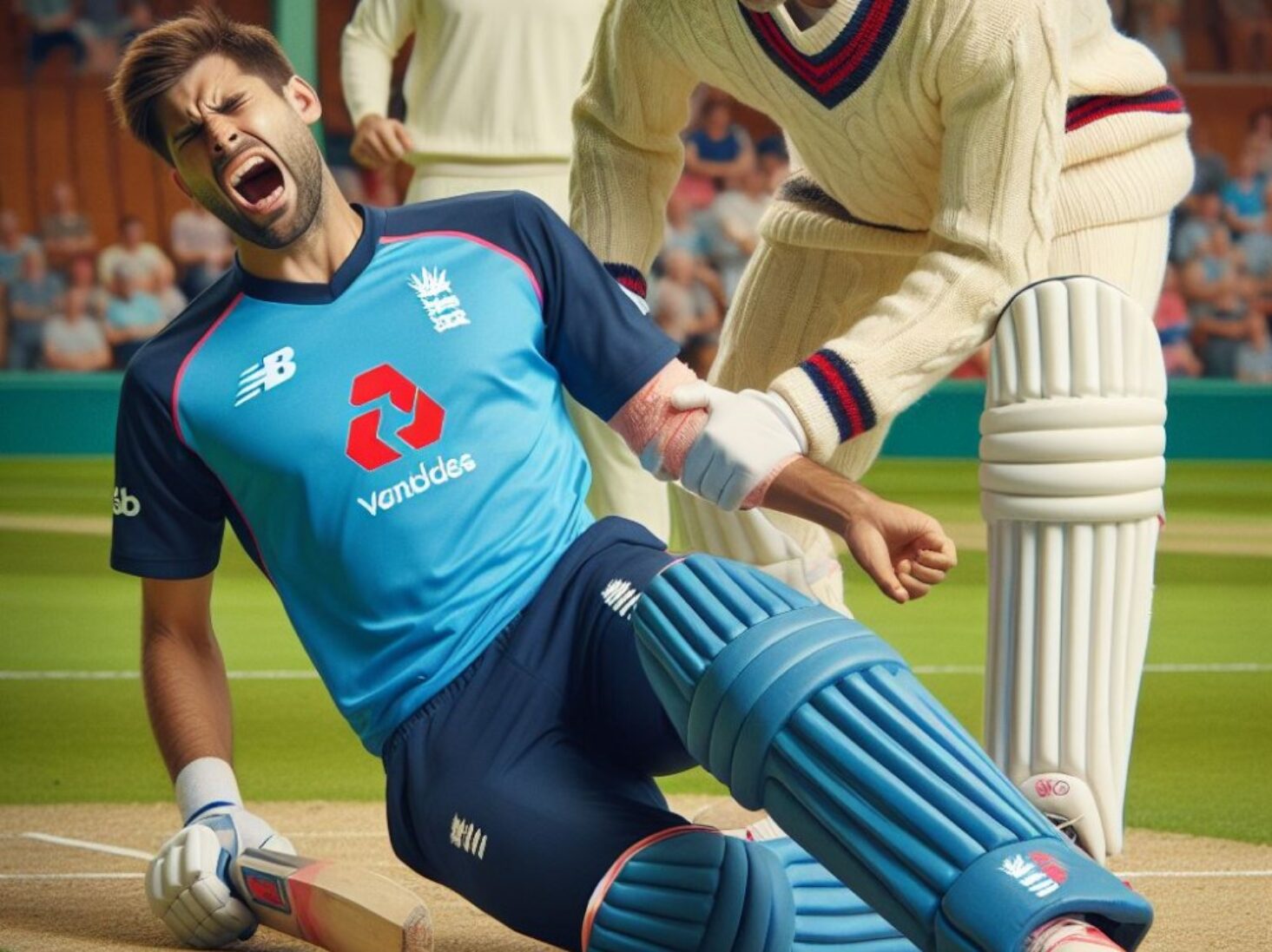
How Can Bowlers Reduce Injury Risks In Cricket
In the high-intensity sport of cricket, bowlers are particularly prone to injuries due to the repetitive and strenuous nature of their bowling action. It is crucial for bowlers to take steps to reduce injury risks and safeguard their physical well-being. Understanding common bowling injuries is the first step towards injury prevention. These injuries often include shoulder injuries, back injuries, and knee injuries, which can significantly impact a bowler’s performance and longevity in the sport.
To prevent bowling injuries, it is essential to follow proper techniques and incorporate effective injury prevention strategies. Maintaining proper bowling technique, warming up before bowling, improving muscular strength and flexibility, using appropriate bowling equipment, and listening to your body’s needs for rest are some important tips and techniques to minimize injury risks.
Seeking professional help can also greatly contribute to injury prevention. Consulting with a bowling coach, working with a strength and conditioning specialist, and scheduling regular physiotherapy sessions can provide valuable guidance and support in preventing injuries and enhancing performance.
In addition to technique and professional guidance, nutrition and hydration play a vital role in injury prevention for bowlers. A balanced diet, rich in essential nutrients and adequate protein, supports muscle recovery and strengthens the body’s resilience. Staying hydrated, especially during demanding bowling sessions, is equally important to prevent fatigue and muscle cramps.
By implementing these injury prevention strategies, bowlers can minimize the risk of injuries and maintain their physical well-being, allowing them to perform at their best and enjoy a long and successful career in cricket.
The Importance of Reducing Injury Risks in Cricket Bowling

Reducing injury risks in cricket bowling is of utmost importance for the long-term performance and well-being of players. It is crucial that they prioritize proper training, warm-up exercises, and maintaining good technique to minimize the chances of injuries such as muscle strains, stress fractures, and overuse injuries.
To achieve this, bowlers must have a comprehensive understanding of their body mechanics and listen attentively to their bodies for any signs of fatigue or pain.
Additionally, regular rest and recovery periods, coupled with a balanced diet, can significantly contribute to injury prevention. It is essential for every cricketer to make injury prevention their top priority to ensure a successful and injury-free career.
Let’s explore a story where the significance of reducing injury risks in cricket bowling becomes evident. In a crucial match, a professional cricketer disregarded proper warm-up and technique, resulting in a severe shoulder injury while bowling.
This incident served as a wake-up call for both the player and the team to revaluate their injury prevention strategies and prioritize the importance of reducing injury risks in cricket bowling. The player underwent a dedicated rehabilitation program and incorporated stringent injury prevention measures into their training routine.
As a result, their performance remarkably improved, leading to an injury-free career.
Understanding Common Bowling Injuries
Bowling injuries can put a serious damper on a cricketer’s performance, but understanding the most common types of bowling injuries is the first step towards prevention. In this section, we’ll dive into the world of common bowling injuries and explore the potential risks they pose.
From shoulder injuries to back and knee injuries, we’ll uncover the impact these ailments can have on bowlers and shed light on the importance of injury prevention in the game of cricket.
Shoulder Injuries
Shoulder injuries are extremely common among cricket bowlers due to the repetitive nature of bowling actions and the high forces involved. To effectively minimize the risk of shoulder injuries, bowlers should pay attention to the following essential factors:
- Proper warm-up: It is crucial for bowlers to engage in dynamic stretches and exercises that specifically target the shoulder muscles before they begin bowling. This helps to adequately prepare and warm up the muscles, reducing the chances of experiencing shoulder injuries.
- Strengthening exercises: Emphasize on incorporating exercises that aim to strengthen the muscles surrounding the shoulder, particularly the rotator cuff. By improving the stability of the shoulder, these exercises prove to be instrumental in preventing injuries.
- Technique: Collaborating with a bowling coach is vital to ensure that bowlers adopt and maintain the correct bowling technique. This includes maintaining optimal body alignment and avoiding excessive stress on the shoulder joint, which significantly reduces the risk of shoulder injuries.
- Rest and recovery: Allowing sufficient time for rest and recovery is crucial in preventing overuse injuries. It is crucial for bowlers to avoid excessively bowling and to pay attention to any signs of fatigue or pain in their body. Listening to these warning signs is key to avoiding shoulder injuries.
- Seek professional help: In the case of experiencing shoulder pain or discomfort, it is advisable to consult with a physiotherapist or a healthcare professional. They will provide the necessary expertise in identifying the issue, delivering appropriate treatment, and guiding with rehabilitation.
Back Injuries
Cricket bowlers can minimize the risk of back injuries by taking certain precautions and following specific techniques. It is important to maintain proper posture and alignment during the bowling action in order to reduce strain on the back.
Additionally, focusing on strengthening the core muscles, particularly the abdominal and lower back muscles, provides stability and support to the back. Prior to bowling, it is crucial to warm up adequately as this increases blood flow and flexibility in the back muscles.
Using appropriate bowling equipment, including a supportive and well-fitted back brace, can provide extra support and reduce the risk of back injuries. It is also important to listen to your body and rest when necessary since overuse and fatigue can make you more vulnerable to back injuries.
Finally, if you experience persistent or severe back pain, it is advisable to seek professional help from a physiotherapist who specializes in sports injuries.
Knee Injuries
Knee injuries are a common occurrence among cricket bowlers due to the repetitive nature of their actions. Here are some valuable tips to prevent knee injuries while bowling:
- It is crucial to engage in proper warm-up exercises that specifically target the muscles and joints surrounding the knee to avoid knee injuries.
- One should focus on maintaining proper bowling technique to minimize stress on the knees and reduce the risk of knee injuries.
- Performing strengthening exercises for the muscles that support the knee, such as the quadriceps and hamstrings, is essential to prevent knee injuries.
- Wearing appropriate footwear with adequate cushioning and support is important in avoiding knee injuries.
- Pay attention to your body and take rest when you experience any pain or fatigue during bowling to prevent knee injuries.
- For professional guidance and support, it is advisable to consult with a physiotherapist or sports specialist regarding knee injuries.
Preventing Bowling Injuries: Tips and Techniques

In the quest for injury prevention in cricket, it’s crucial for bowlers to be equipped with the right knowledge and techniques. In this section, we’ll explore a range of tips and techniques aimed at reducing the risks associated with bowling.
From maintaining proper technique to incorporating warm-up routines, improving muscular strength and flexibility, using proper equipment, and listening to your body, we’ll cover a comprehensive array of strategies.
We’ll highlight the significance of seeking professional help, as well as the role of nutrition and hydration in injury prevention. Let’s dive in and discover how bowlers can protect themselves on the cricket pitch!
Maintain Proper Bowling Technique
Maintaining proper bowling technique is crucial for reducing injury risks in cricket. To maintain proper bowling technique, it is important to follow these steps:
- Ensure you have a balanced and athletic stance at the crease while bowling.
- Maintain a consistent and smooth approach to the bowling crease.
- Pay attention to your wrist position in order to achieve optimum control and accuracy.
- Master the release of the ball at the right time to generate maximum pace and spin.
- Complete your delivery with a balanced and controlled stride, following through properly.
By adhering to these techniques, not only will you decrease the risk of injury, but you will also enhance your performance on the field. Regular practice and guidance from a bowling coach will help you refine your technique effectively.
Warm Up before Bowling
A proper warm-up routine is essential before starting a bowling session in cricket. Warm Up before Bowling This helps to prepare the body for the physical demands of bowling and reduces the risk of injuries. Here are some steps to include in your warm-up routine:
- Start with a brisk jog or dynamic stretching to increase blood flow and warm up the muscles.
- Perform arm and shoulder rotations to loosen up the upper body.
- Do lunges and squats to activate the lower body and improve stability.
- Include exercises that target the core muscles for better balance and control.
- Practice some bowling-specific movements, such as shadow bowling or bowling motions with a lighter ball.
- Finish off with some gentle static stretching to improve flexibility and reduce muscle tension.
Before a crucial match, a bowler ignored warming up properly. As a result, they strained their shoulder during the first over and had to sit out for the rest of the game. This incident highlighted the importance of a proper warm-up routine before bowling to prevent injuries and perform at their best.
Improve Muscular Strength and Flexibility
To enhance performance, prevent injuries, and prolong their cricket careers, bowlers must prioritize improving their muscular strength and flexibility. This can be achieved through a combination of techniques and exercises.
- Strength training: Engage in targeted exercises such as squats, lunges, and shoulder presses to strengthen the specific muscles used in bowling.
- Stretching: Regularly stretch the muscles involved in bowling, including the shoulders, back, and legs, to enhance flexibility and reduce the risk of muscle strains.
- Core exercises: Build strength in the core muscles, including the abdomen and lower back, to provide stability and support during bowling movements.
- Incorporating practices like Yoga or Pilates into your fitness routine can further enhance overall body strength, flexibility, and balance.
- Consistent practice: Continuously work on refining your bowling technique and form to ensure efficient movements and minimize strain on the body.
By focusing on improving both muscular strength and flexibility, bowlers can safeguard against injuries, optimize performance, and prolong their cricket careers.
Use Proper Bowling Equipment
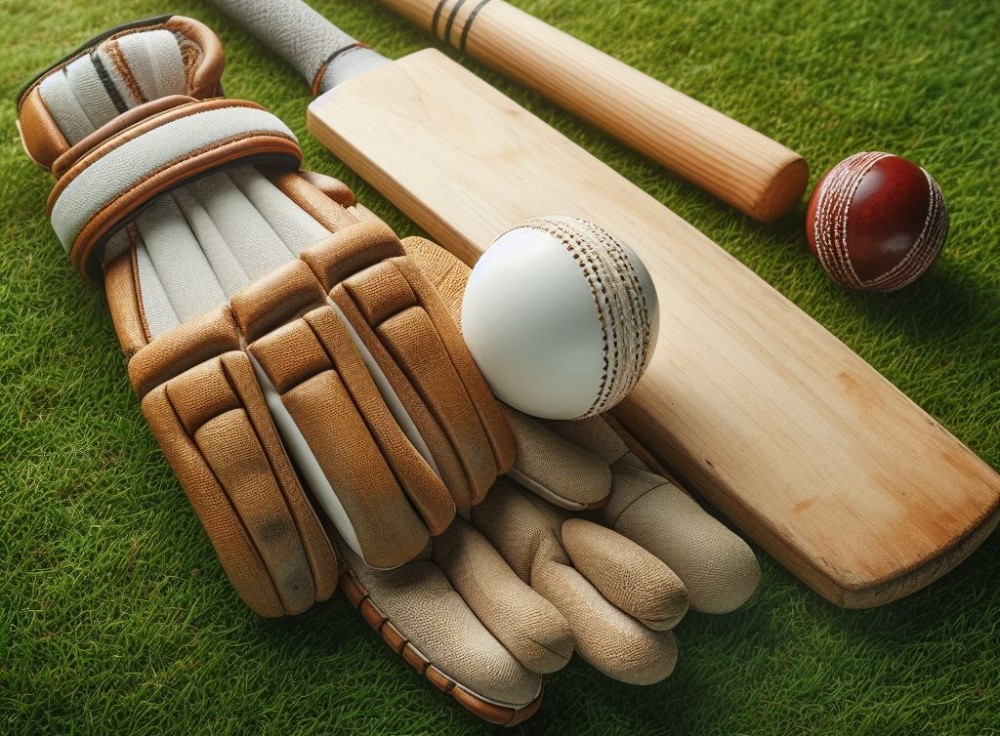
Using proper bowling equipment is essential in minimizing the risk of injuries in cricket. When it comes to bowling, there are several crucial pieces of equipment to consider:
- Bowling Shoes: It is important to invest in high-quality bowling shoes with excellent traction to prevent any chance of slipping on the bowling alley.
- Bowling Ball: Selecting a ball that fits comfortably in your hand and has the correct weight and grip is vital to avoid straining your fingers and wrist.
- Bowling Gloves: Wearing gloves can provide you with extra support and grip, significantly reducing the likelihood of wrist and hand injuries.
- Wrist Support: Using a wrist support brace can help stabilize your wrist and safeguard it from excessive strain.
By utilizing proper equipment, bowlers can enhance their overall performance while minimizing the risk of injuries. Always prioritize the maintenance and condition of your equipment to ensure their maximum effectiveness.
Listen to Your Body and Rest
It is crucial for bowlers to listen to their bodies and rest to reduce injury risks in cricket. Overexertion and fatigue can lead to muscle strains, joint issues, and other injuries. Resting allows the body to recover and prevents overuse injuries. To effectively listen to your body and rest, consider the following suggestions:
1. Take regular breaks during training sessions or matches.
2. Pay attention to any pain or discomfort and address it immediately.
3. Allow for adequate recovery time between bowling sessions.
4. Get enough sleep to support muscle repair and overall well-being.
5. Follow a balanced diet to provide your body with essential nutrients and support recovery.
By prioritizing rest and recovery, bowlers can minimize the chances of sustaining injuries and maintain peak performance on the cricket field.
Seeking Professional Help for Injury Prevention
Seeking professional help is essential for injury prevention in cricket bowling. Engaging a bowling coach is crucial as they can offer valuable guidance on improving technique and avoiding common injuries such as shoulder, back, and knee injuries.
Collaborating with a strength and conditioning specialist can significantly enhance muscular strength and flexibility, thereby reducing the likelihood of strains and sprains. Regular physiotherapy sessions can effectively address any existing issues and proactively prevent future injuries through targeted exercises and treatments.
Prioritizing nutrition and hydration is also vital in injury prevention, achieved by maintaining a balanced diet and staying hydrated during bowling sessions. To stay injury-free and perform at your best, it is imperative to seek professional help.
Consult with a Bowling Coach
- Consult with a bowling coach to reduce injury risks in cricket.
- Consult with a bowling coach to receive guidance and expertise in improving bowling technique and preventing common bowling injuries.
- When consulting with a bowling coach, evaluate your current bowling technique and identify any weaknesses or areas for improvement.
- Work with the coach during your consultation to address any technical flaws, such as incorrect body positioning or incorrect arm action.
- During your consultation, ask the coach for guidance on proper warm-up exercises and stretching routines that are specific to bowling.
- Consult with a bowling coach to learn specific drills and exercises that can strengthen your bowling muscles and improve flexibility.
- When consulting with a bowling coach, make sure to discuss any concerns or discomfort experienced during bowling sessions and seek advice on how to prevent or address them.
- Remember, consulting with a bowling coach is an ongoing process that can help you refine your technique, prevent injuries, and improve performance.
Regular communication and practice with your bowling coach are key for continued progress.
Work with a Strength and Conditioning Specialist
Working with a strength and conditioning specialist is essential for bowlers to minimize their chances of getting injured in cricket. Here are the necessary steps to follow:
- Assessment: A strength and conditioning specialist will evaluate your existing fitness, strength, and flexibility levels.
- Customized Program: They will create a personalized training plan to target your specific requirements and enhance your bowling performance.
- Strength Training: The specialist will provide guidance on performing exercises that specifically target key bowling muscles, including the shoulders, core, and legs.
- Flexibility and Mobility: Incorporating stretching and mobility exercises will improve your range of motion and prevent muscle imbalances.
- Injury Prevention: The specialist will educate you on proper warm-up techniques, recovery strategies, and exercises to prevent injuries.
Collaborating with a strength and conditioning specialist will not only reduce your risk of injuries but also improve your performance and overall fitness levels on the cricket field.
Schedule Regular Physiotherapy Sessions
To maintain physical health and prevent injuries in cricket bowling, it is crucial for bowlers to schedule regular physiotherapy sessions. These sessions can provide valuable benefits in preventing and managing injuries. Here are key reasons why bowlers should incorporate regular physiotherapy sessions into their training routine:
- Evaluation and Assessment: Physiotherapists can assess an individual’s biomechanics, identify weaknesses or imbalances, and develop personalized injury prevention strategies.
- Injury Prevention: By scheduling regular physiotherapy sessions, bowlers can identify potential issues early on and address them through targeted exercises and treatments, reducing the risk of injuries.
- Rehabilitation: If a bowler sustains an injury, regular physiotherapy sessions are vital for the proper rehabilitation process, ensuring a safe return to bowling.
- Optimal Performance: By incorporating regular physiotherapy sessions, bowlers can enhance muscular strength, flexibility, and overall body mechanics, thereby improving their performance on the field.
- Education and Guidance: Physiotherapists can educate bowlers on injury prevention techniques, proper warm-up and cool-down routines, and provide guidance on lifestyle choices that promote overall well-being.
By scheduling regular physiotherapy sessions into their training program, bowlers can maintain their physical health, prevent injuries, and enhance their overall performance on the cricket pitch.
The Role of Nutrition and Hydration in Injury Prevention
Proper nutrition and hydration play a crucial role in injury prevention for cricket bowlers. The role of nutrition and hydration is vital in keeping the bowlers healthy and fit. A balanced diet, which is rich in vitamins, minerals, and protein, not only helps maintain muscle strength but also promotes tissue repair.
Moreover, ensuring adequate hydration is essential as it helps prevent muscle cramps and fatigue, ultimately leading to optimal performance. To further enhance injury prevention, it is recommended to include foods with anti-inflammatory properties, such as fruits and vegetables, as they aid in reducing inflammation and promoting faster recovery.
Additionally, it is imperative to maintain proper fluid balance and prevent dehydration-related issues by hydrating before, during, and after bowling sessions. This comprehensive approach to nutrition and hydration significantly reduces the risk of injuries and enhances overall performance on the cricket field.
Fact: Staying hydrated can improve reaction time and decision-making abilities, which ultimately leads to better performance in cricket bowling.
Importance of a Balanced Diet
Maintaining a balanced diet is crucial for bowlers to reduce the risk of injury in cricket. The importance of a well-rounded diet cannot be emphasized enough as it provides the necessary nutrients for optimal performance and recovery.
It should include a variety of foods from different food groups, such as carbohydrates for energy, proteins for muscle repair and growth, healthy fats for joint health, and vitamins and minerals for overall health.
Recognizing the importance of a balanced diet, bowlers should prioritize injury prevention in cricket by paying attention to their dietary choices and ensuring they are consuming a balanced and nutritious diet. Eating a balanced diet helps bowlers maintain a healthy body weight, supports the immune system, and enhances muscle strength and endurance.
Staying Hydrated during Bowling Sessions
Staying hydrated during bowling sessions is crucial to prevent injury and maintain optimal performance on the cricket field. Here are some tips to ensure you stay properly hydrated:
- Prioritize drinking water before, during, and after bowling sessions to replenish the fluids lost through sweat.
- Make sure to carry a water bottle with you and take regular sips throughout the game to stay hydrated.
- Consider incorporating sports drinks that contain electrolytes into your hydration routine to replace lost minerals and maintain the right levels of hydration.
- Keep an eye on the color of your urine as it can indicate your hydration levels; if your urine is light-colored, it means you are well-hydrated, but if it’s dark-colored, it may suggest dehydration.
- Boost your hydration by consuming hydrating foods such as fruits and vegetables that have a high water content.
- To avoid dehydration, it is important to limit or avoid the intake of caffeine and alcohol.
